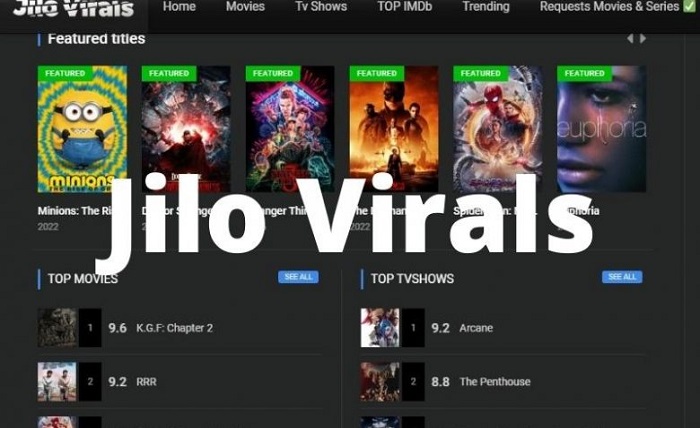Jilo Virals: An In-Depth Guide to Viral Content Creation

In today’s digital age, viral content has become a buzzword for social media users, influencers, and brands alike. Viral content refers to any piece of content that has become extremely popular and widely shared online, usually within a short span of time. From humorous memes and videos to inspiring stories and brand campaigns, viral content is the holy grail of online marketing.
One of the most recent viral sensations to emerge is Jilo Virals, a social media account that has taken the internet by storm. In this article, we’ll take a closer look at Jilo Virals and explore the key elements that make up viral content. We’ll also delve into the strategies behind creating viral content and how you can leverage it to grow your brand’s online presence.
Table of Contents
- Introduction
- What is Jilo Virals?
- The Power of Viral Content
- Key Elements of Viral Content
- Understanding Your Target Audience
- Finding Inspiration for Viral Content
- Creating Viral Content
- Testing and Measuring Viral Content
- Leveraging Viral Content for Brand Growth
- Common Mistakes to Avoid When Creating Viral Content
- Conclusion
- FAQs
What is Jilo Virals?
Jilo Virals is a social media account that has gained immense popularity for its humorous and relatable content. The account, which has amassed over a million followers on Instagram and TikTok, features short videos and memes that showcase everyday situations in a humorous light. From poking fun at office culture to satirizing relationship dynamics, Jilo Virals has managed to strike a chord with audiences across the globe.
The Power of Viral Content
Viral content has the power to reach a massive audience within a short period of time, making it a highly effective tool for online marketing. When a piece of content goes viral, it can lead to a surge in website traffic, social media engagement, and brand awareness. Viral content can also be a powerful tool for brand storytelling, allowing brands to showcase their values and connect with audiences on a deeper level.
Working URL
jiloviral.com
Key Elements of Viral Content
While creating viral content is not an exact science, there are certain key elements that are commonly found in viral content. These include:
1. Emotion
Viral content is often emotionally charged, whether it’s humorous, heartwarming, or thought-provoking. By eliciting a strong emotional response from viewers, viral content has a higher chance of being shared and talked about.
2. Relevance
Viral content is often relevant to current events or popular culture, making it more relatable to audiences. By tapping into trending topics or cultural phenomena, viral content creators can capture the attention of a wider audience.
3. Share ability
Viral content is highly shareable, often featuring a call to action that encourages viewers to share it with their friends and followers. By making it easy for viewers to share content, creators can increase the reach and impact of their content.
4. Authenticity
Viral content is often authentic and genuine, reflecting the voice and personality of the creator. By being true to themselves and their audience, viral content creators can build a loyal following that engages with their content on a regular basis.
Understanding Your Target Audience
Before creating viral content, it’s essential to have a deep understanding of your target audience. This includes their demographics, interests, pain points, and values. By understanding what resonates with your audience, you can create content that is more likely to go viral and be shared across social media.
Finding Inspiration for Viral Content
Creating viral content requires a lot of creativity and inspiration. Here are some tips for finding inspiration for viral content:
1. Keep an Eye on Trending Topics
One of the easiest ways to find inspiration for viral content is to keep an eye on trending topics and hashtags on social media. By tapping into current events and cultural phenomena, you can create content that is timely and relevant.
2. Analyze Your Competitors
Another way to find inspiration for viral content is to analyze your competitors’ social media accounts. Look at what types of content they are creating, what’s working well for them, and how they are engaging with their audience. This can give you ideas for creating content that resonates with your own audience.
3. Ask Your Audience
One of the best ways to find inspiration for viral content is to simply ask your audience what they want to see. Conduct surveys or polls on social media to gather feedback from your audience on what types of content they would like to see.
Creating Viral Content
Now that you have an understanding of the key elements of viral content and some tips for finding inspiration, let’s take a closer look at the process of creating viral content.
1. Brainstorm Ideas
The first step in creating viral content is to brainstorm ideas. This can be done by conducting a creative brainstorming session with your team or by jotting down ideas as they come to you. Make sure to keep your target audience in mind and focus on creating content that resonates with them.
2. Plan Your Content
Once you have a list of ideas, it’s time to plan your content. This includes determining the format of your content (e.g. video, meme, infographic), creating a storyboard or script, and planning the distribution strategy.
3. Create Your Content
With your plan in place, it’s time to create your content. Make sure to focus on the key elements of viral content, including emotion, relevance, shareability, and authenticity. Consider working with a team of creatives, including writers, designers, and videographers, to bring your content to life.
4. Test and Refine Your Content
After creating your content, it’s important to test and refine it. This can be done by sharing your content with a small group of trusted followers or by running a small paid advertising campaign. Use analytics tools to track engagement and make adjustments as needed.
Leveraging Viral Content for Brand Growth
Viral content can be a powerful tool for brand growth, as it has the potential to reach a large audience quickly and increase brand awareness. Here are some tips for leveraging viral content for brand growth:
- Create shareable content: The first step in leveraging viral content is to create content that people want to share. This could be a funny video, an inspiring story, or a useful infographic. The key is to make the content engaging and relevant to your target audience.
- Use social media: Social media platforms like Facebook, Twitter, and Instagram are ideal for sharing viral content. Make sure to optimize your posts with relevant hashtags and engaging captions to encourage people to share your content.
- Collaborate with influencers: Influencers can help amplify your content and reach new audiences. Find influencers in your industry or niche who have a large following and are a good fit for your brand. Reach out to them and see if they would be interested in collaborating on a piece of viral content.
- Invest in paid promotion: While viral content can spread on its own, investing in paid promotion can help it reach an even larger audience. Consider running paid ads on social media platforms or using native advertising to promote your content.
- Monitor and analyze your results: Once your content starts to go viral, it’s important to monitor and analyze your results. Look at metrics like engagement, shares, and website traffic to see how your content is performing. Use this information to refine your strategy and create even more effective viral content in the future.
Remember, not all content will go viral, and even the best viral content may not lead to immediate sales. However, by consistently creating shareable content and leveraging social media and influencers, you can build brand awareness and grow your audience over time.




